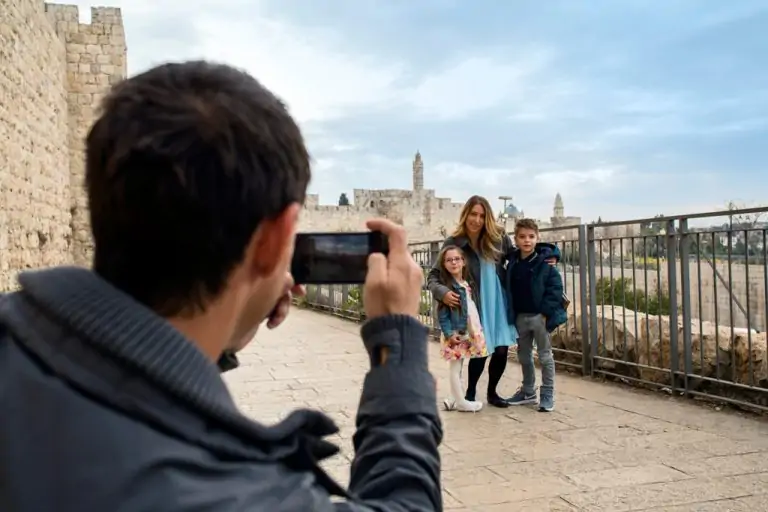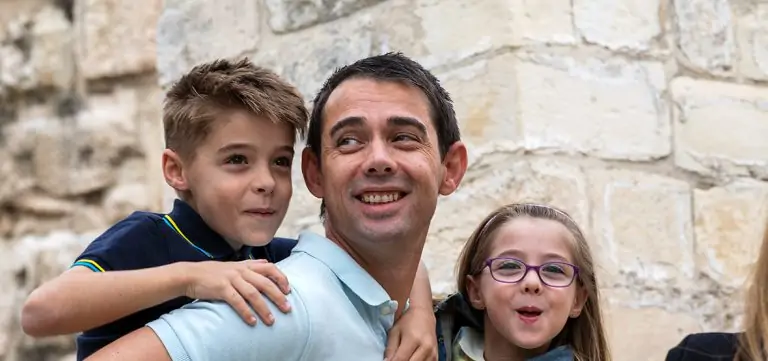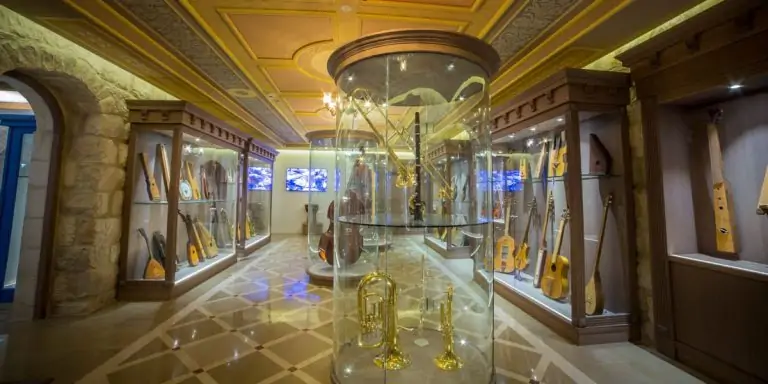This house is full of stories,
she says. They are stories that she is eager to share with visitors. That’s why several years ago, she and about 15 other women founded Nifleot Ein Kerem, which organizes visits for both individuals and groups of tourists and business travelers to homes in Ein Kerem for meals, cooking lessons, musical performances and other cultural activities. “Our project is about cooperating between women, but also about sharing our history and our city,” says Karbassi, who shares stories and poetry written in the now dying Ladino dialect of Moroccan Jews with visitors to her home, and sells homemade jam. The project now part of a larger city-wide home hospitality program called Women and Stories in Jerusalem, includes about 30 women from Ein Kerem, a Jerusalem neighborhood that was once its own pastoral village.
As the wine press in Karbasi’s kitchen–as well as other archaeological discoveries, including those of ritual baths– show, Ein Kerem was once home to an ancient Jewish community. Over the years, it was populated by many other groups, as evidenced by the numerous churches and monasteries that dot the green and rocky landscape, attracting many Christian pilgrims today.
With the establishment of the state of Israel, Jews once again began living in Ein Kerem, including large groups of immigrants from Yemen. This is just part of the history that visitors can discover through entering homes here. Mazal Motell’s parents settled in Ein Kerem after arriving to the newly-established state of Israel from Yemen. Motell, dressed in the traditional clothing her grandmothers wore back in Yemen, uses a stone to grind garlic, cumin, hot pepper, coriander and salt. Soon she will add tomatoes to the mixture to make schug, a classic Yemenite dip for bread, she explains to a group of visitors.
Motell, a 67-year-old mother of five was a kindergarten teacher until recently retiring, when she began to participate in this project. She feels it strengthens her connection to her past; to her Yemenite roots, but also to her childhood, when her family made a living selling milk and cheese from their herd of goats that wandered the grassy hills of Ein Kerem.
It brings out everything I had inside of me,
she says. “I really enjoy talking about the old days.” Because real life, revolving around family and work, continues in these homes, the visits give visitors authentic experiences that are often hard to find. “My place is not made for tourism, I live my own life,” says Ruth Havilio, an artist who makes hand-painted tiles in a studio attached to her refurbished stone house in Ein Kerem, and hosts groups to tell them both about her art and her parents’ key roles in Israel’s War for Independence in the 1940s.
But once in a while I open my door.
Prices for in-home tours vary from 30 shekels per person to more than 200 shekels per person, depending on the activity and number of people. For more information and to make a reservation, email Nashim.jerusalem@gmail.com or call 02-6298154 or 054-2550505.


